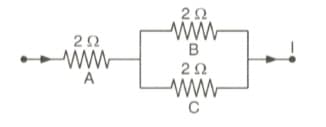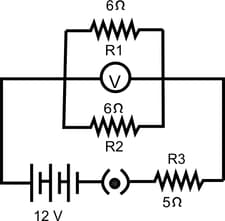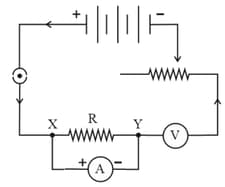Neha Jindal Solutions for Chapter: Electricity, Exercise 3: EXERCISES
Neha Jindal Physics Solutions for Exercise - Neha Jindal Solutions for Chapter: Electricity, Exercise 3: EXERCISES
Attempt the practice questions on Chapter 3: Electricity, Exercise 3: EXERCISES with hints and solutions to strengthen your understanding. SCIENCE PHYSICS solutions are prepared by Experienced Embibe Experts.
Questions from Neha Jindal Solutions for Chapter: Electricity, Exercise 3: EXERCISES with Hints & Solutions
Three resistors, A, B and C, are connected as shown. Each of them dissipates energy and can withstand a maximum power of without melting. Find the maximum current that can flow through the three resistors.

Describe an activity to verify Ohm’s law experimentally. Also, state Ohm's law and write the precautions that you should take while performing this Activity.
Describe an activity to prove that
(a) electric current across all resistors connected in series with a battery is same.
(b) electric potential difference across all resistors connected in parallel with a battery is same.
What is Joule’s heating effect? How can it be explained experimentally? List its few applications in daily life.
In the electric circuit given, find the following:
(a) Current flowing through each resistor.
(b) Voltmeter reading.
(c) Power dissipated in resistor.

What constitutes electric current through a wire? The drift speed of such particles in the wire is very less. Then, how does a bulb light up immediately when the switch is on?
A wire of resistance is bent to form a circular loop. Find the resistance between two points at the ends of any diameter of the loop?
A child has drawn the electric circuit to study Ohm’s Law as shown. His teacher told that the circuit diagram needs correction. Correct the diagram and redraw.

